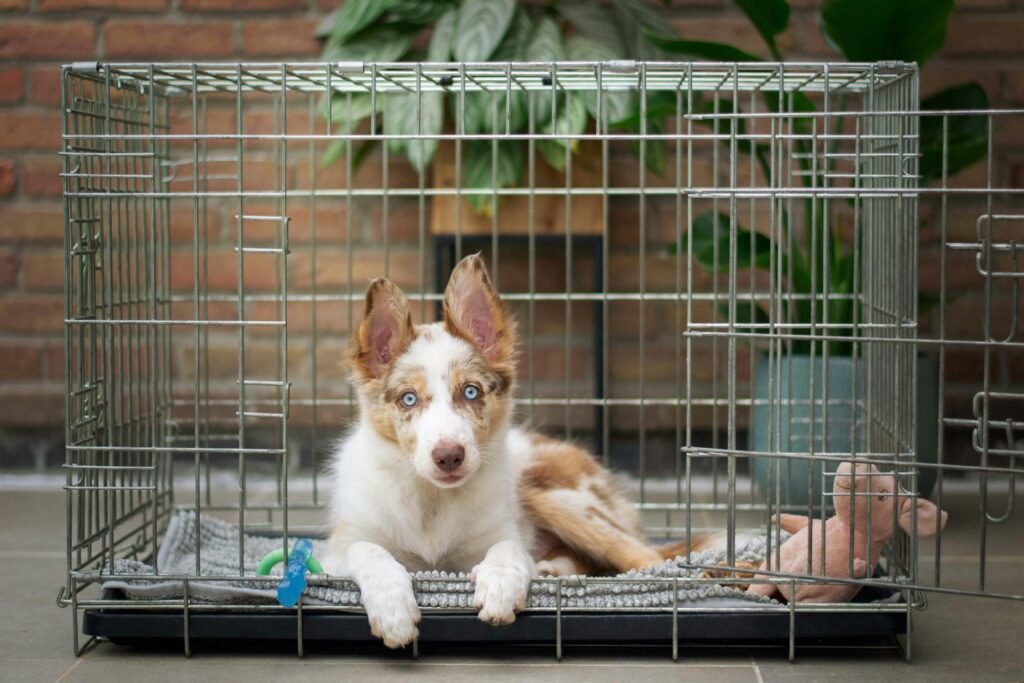Are you struggling to crate train your furry friend for travel purposes? Do you find them anxious or uncomfortable whenever you try to transport them in a crate? Don’t worry, you’re not alone. In this comprehensive guide, we’ll walk you through the tips and techniques to help you master crate training for travel with ease. By following these simple guidelines, you’ll be able to make your pet’s travel experience stress-free and comfortable.
Understanding Crate Training Basics
Crate training is a valuable skill to have, especially when it comes to traveling with your pet. It provides them with a sense of security and a familiar space in unfamiliar surroundings. Before you dive into crate training for travel, it’s essential to understand the basics of crate training.
Crate training involves getting your pet accustomed to spending time in a crate, making them feel comfortable and safe in the confined space. This can help reduce anxiety and stress for your pet when traveling.
Choose the Right Crate
The first step in crate training for travel is selecting the right crate for your pet. The crate should be large enough for your pet to stand up, turn around, and lie down comfortably. It’s essential to choose a crate with proper ventilation and security features to ensure your pet’s safety during travel.
When selecting a crate, consider your pet’s size, weight, and breed. For smaller pets, a soft-sided crate may be sufficient, while larger pets may require a sturdier plastic or metal crate. Make sure to choose a crate that is airline-approved if you plan on flying with your pet.
Getting Your Pet Acclimated to the Crate
Now that you have chosen the right crate for your pet, it’s time to get them used to spending time in it. This step is crucial in crate training for travel, as it will help your pet feel comfortable and safe in the crate during the journey.
Introduce the Crate Slowly
Start by placing the crate in a familiar and comfortable area of your home. Leave the door open and encourage your pet to explore the crate at their own pace. You can entice them with treats or toys to make the crate a positive and rewarding space.
Gradually increase the amount of time your pet spends in the crate, starting with short intervals and gradually extending them. This will help your pet get accustomed to the crate and build a positive association with it.
Create a Positive Environment
Make the crate a cozy and inviting space for your pet by lining it with soft bedding and familiar blankets or toys. You can also place your pet’s favorite treats or food inside the crate to encourage them to go in willingly.
Avoid using the crate as a punishment for your pet, as this can create negative associations with the crate. Instead, make it a comfortable and safe space where your pet can relax and feel secure.

This image is property of images.unsplash.com.
Practicing Crate Training for Travel
Once your pet is comfortable spending time in the crate at home, it’s time to practice crate training for travel. This step involves simulating travel conditions and getting your pet used to being in the crate for extended periods.
Short Practice Sessions
Start by taking short car rides with your pet in the crate to get them used to the motion and noise of the vehicle. Begin with brief trips around the neighborhood and gradually increase the duration of the rides.
During the car rides, make sure to secure the crate properly in the vehicle to ensure your pet’s safety. You can also play calming music or use a pheromone spray to help relax your pet during the journey.
Reward Positive Behavior
Throughout the practice sessions, be sure to reward your pet for calm and relaxed behavior in the crate. Use treats, praise, or toys to reinforce positive associations with the crate and travel.
If your pet exhibits signs of anxiety or stress, such as whining or pacing, remain calm and reassuring. Avoid reacting to negative behavior, as this can reinforce it. Instead, focus on rewarding calm and relaxed behavior to encourage your pet to feel more comfortable in the crate.
Preparing for Travel
As you get closer to your travel date, it’s essential to make final preparations to ensure a smooth and stress-free journey for your pet. Taking the time to plan ahead and gather all necessary supplies will help make the travel experience more comfortable for both you and your furry friend.
Check Travel Regulations
If you are traveling by air, make sure to check the airline’s pet travel regulations and requirements. This includes crate size restrictions, health certificates, and vaccination records. It’s essential to comply with these regulations to avoid any issues on the day of travel.
For car travel, ensure that your pet’s crate is securely fastened in the vehicle and that your pet is restrained with a harness or seatbelt for safety. It’s also a good idea to bring along a travel water bottle and bowls, as well as any necessary medications or comfort items for your pet.
Pack Essentials
When packing for your pet’s journey, be sure to include all the essentials they will need during travel. This includes food, water, bowls, medications, toys, blankets, and any other comfort items. It’s also a good idea to pack a first aid kit for your pet in case of emergencies.
Make sure to pack enough food and water for the duration of the journey, as well as extra supplies in case of delays. Bringing along familiar items from home, such as their favorite toy or blanket, can help comfort your pet and make them feel more at ease during travel.

This image is property of images.unsplash.com.
Traveling with Your Pet
On the day of travel, it’s important to remain calm and patient with your pet to help them feel comfortable and secure. By following these tips and techniques, you’ll be able to master crate training for travel and ensure a safe and stress-free journey for your furry friend.
Stay Calm and Reassuring
Pets are highly sensitive to their owners’ emotions, so it’s essential to remain calm and reassuring during travel. Speak to your pet in a soothing voice and offer gentle pets or cuddles to help comfort them.
If your pet exhibits signs of anxiety or stress during travel, such as panting or whining, try to distract them with treats or toys. You can also cover the crate with a blanket or towel to create a quiet and dark space for your pet to relax in.
Monitor Your Pet
Throughout the journey, it’s crucial to monitor your pet’s behavior and well-being to ensure they are safe and comfortable. Check on them regularly to make sure they have enough food and water, as well as access to their comfort items.
If your pet shows signs of distress or discomfort, such as excessive panting or drooling, pull over safely and give them a break outside of the crate. Offer them water and a chance to stretch their legs before continuing the journey.
Conclusion
In conclusion, mastering crate training for travel is an essential skill for pet owners who want to ensure a stress-free and safe travel experience for their furry friends. By following these tips and techniques, you’ll be able to help your pet feel comfortable and secure in the crate during travel.
Remember to choose the right crate for your pet, acclimate them to spending time in the crate, and practice crate training for travel before your journey. Make sure to pack all the essentials for your pet and remain calm and reassuring during travel to help them feel at ease.
With patience, consistency, and positive reinforcement, you can successfully crate train your pet for travel and make their travel experience a positive one. By taking the time to plan ahead and prepare for the journey, you’ll be able to enjoy stress-free travel with your furry friend by your side.
